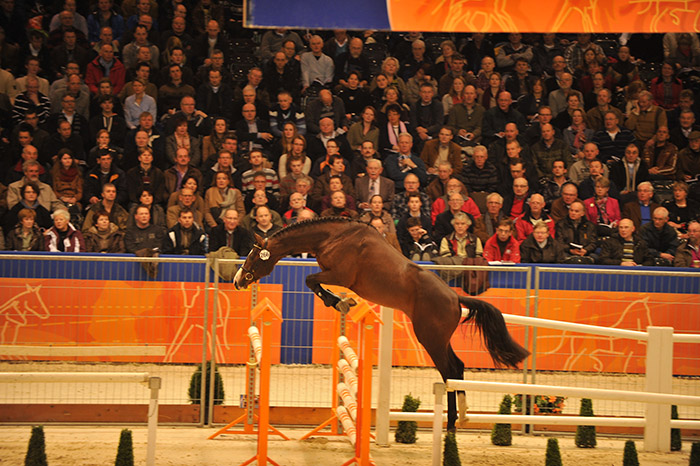Christopher Hector reports from s’Hertogenbosch…
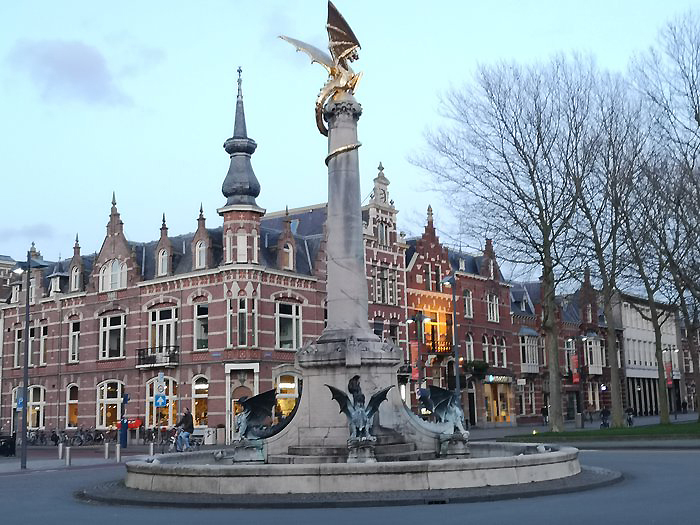
After two years hidden away behind closed doors, the KWPN stallion show returns to the Brabanthalle in all its glory, and I am free to travel to the beautiful city of s’Hertogenbosch. From my hotel room I can see the historic dragon fountain erected in 1903, it’s motif gleaming through the evening dusk, and I am happy to report that my favorite restaurants are just as good as I remember them…
The Jumping Colts
Out of 179 jumpers presented in 2023, 108 or 60.3% were approved to go on to den Bosch. The young stallions are pre-inspected for the right to go to the licensing in the Brabanthalle, where the jumping commission will select the ones to go on to the performance test and then on to a career as a breeding stallion. The high percentage getting passed that first inspection would seem to indicate that the breeders are good judges of whether their horses will succeed, or it might be, that the jumping qualities are less subjective than the dressage ones.
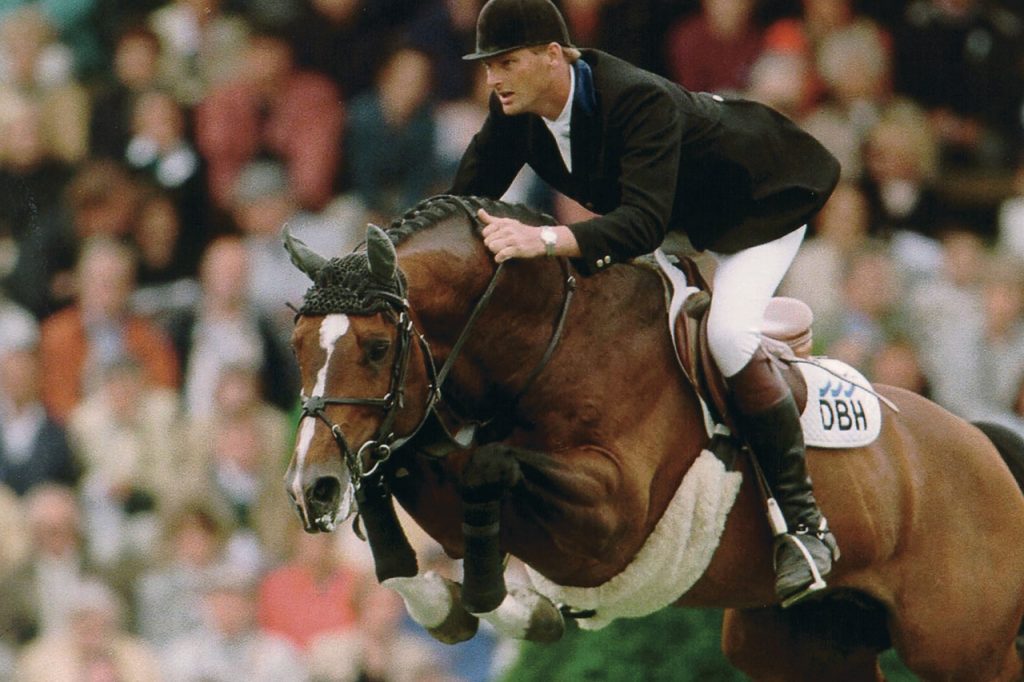
Heartbreaker, a pillar of Dutch jumping breeding
The dominating stallion, Hardrock Z is a newcomer to Holland, imported in 2019 by VDL, though his sire, Heartbreaker, has been a pillar of Dutch jumping breeding since 1993. As of last year, Hippomundo recorded 1725 Heartbreaker progeny of whom 123 competed 1.60m.
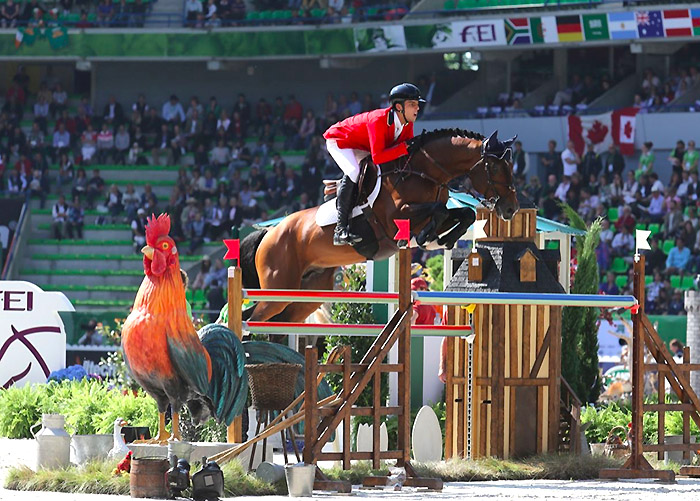
Hardrock Z, by Heartbreaker
The twenty year old Hardrock Z was a solid, if not starring performer with Venezuala’s Emanuel Andrade from 2015 until 2018, in that final year his best was a 5th in a 5-star at Saugertie. Hardrock is out of a Carthago / Rebel Z I, mare. Rebel Z I was the full-brother of Ratina (Ramiro / Almé).
The chair of the showjumping commission, Cor Loeffen praised his representatives in the pre-selection for their ‘typical Heartbreaker traits, such as quick reflexes and eagerness on the jumping.’ But cautioned, ‘Sometimes that last aspect came at the expense of the jump.’
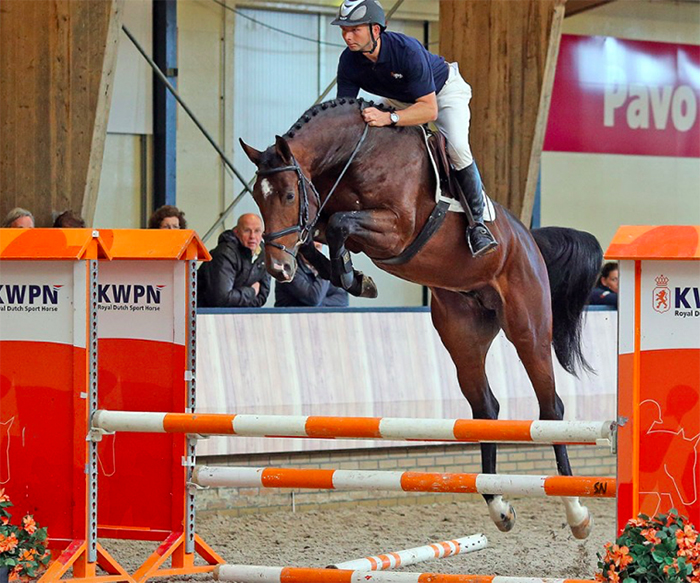
Grandorado, royally bred…
Grandorado sent six colts to den Bosch. The stallion is royally bred, he is by the 1.60m jumper, Eldorado van de Zeshek, out of Bijou Orai, a 1.60 jumper by the Heartbreaker son, Toulon. Grandorado is out of the 1.40 jumper, Charmeque who is by the Capitol son, Carolus II. She is out of a Baloubet du Rouet / Burggraaf mare.
Mr Loeffen drew attention to the Grandorado’s less than consistent conformation, noting, ‘his sons are somewhat varied, but they made a good impression in their jumping performance. ‘
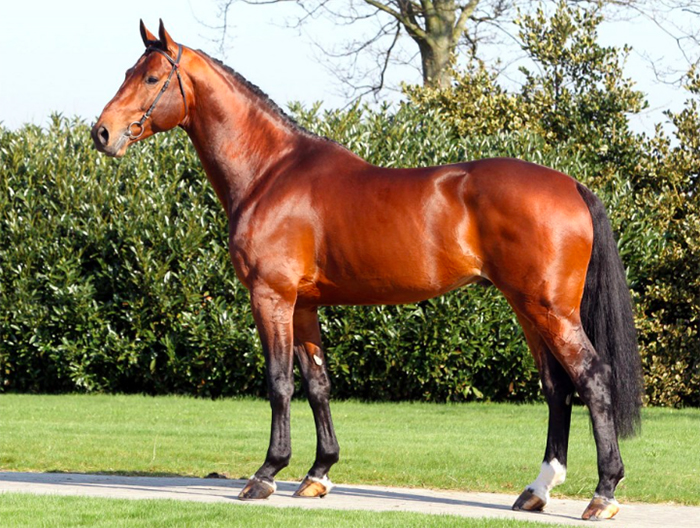
Sire of Grandorado, another Heartbreaker son, Eldorado van de Zeshek
Grandorado has been a consistent Nations Cup team member with Willem Greve, son of the famous breeder, Jan Greve. His best result so far, was when he took home €105,000 for a 3rd in the 5-star at den Bosch in March 2020.
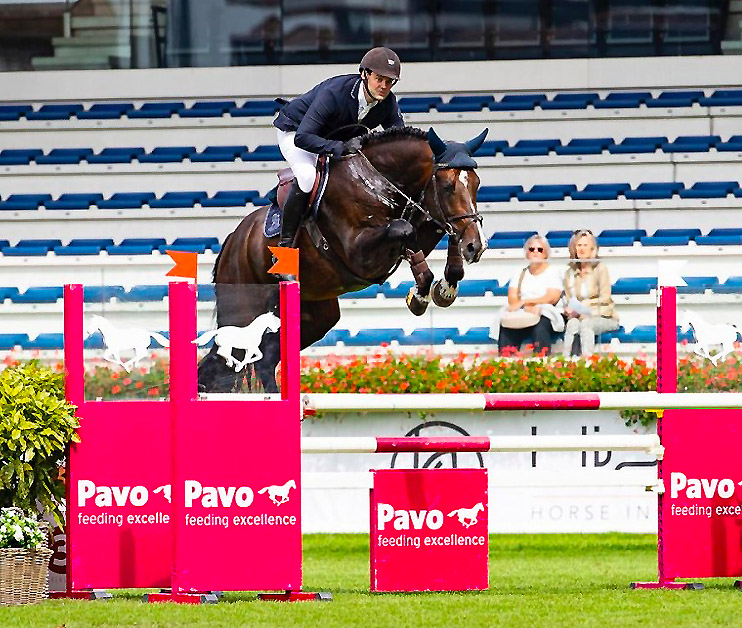
Egbert Schep bred, and owns, La Costa
A new face in the sire’s lineup this year was the seven-year-old 1.40 jumper, La Costa. Out of his first crop, La Costa ES presented five at the pre-selection, with four getting the nod for the second round. All four are owned by La Costa’s breeder Egbert Schep who has a total of nine colts qualified for den Bosch.
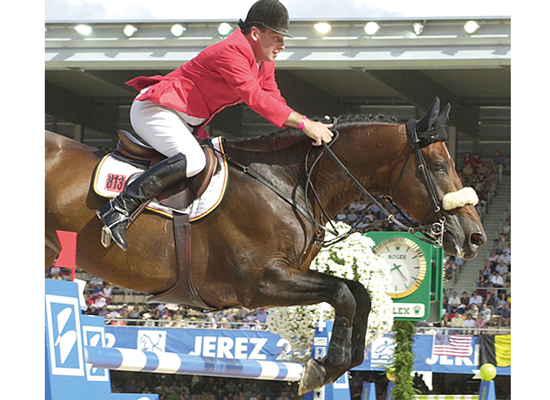
Nabab de Rêve, competing at the 2002 WEG in Jerez
La Costa is by Mosito van het Hellehof, by the Diamant de Sémilly son, Elvis ter Putte who is out of Ukas ter Putte by Darco out of a Quidam de Revel mare. Mosito is out of a Nabab de Rêve mare, who is out of a mare by Gratanus (Grannus / Pilot).
Mosito’s largest payout thus far came in March 2022 when he took home €23,800 after he won a four-star 1.55 Grand Prix at Vejer de la Frontera.
It takes a special sort of dedication to sit there from eight in the morning to watch 71 colts take their chances in the jumping arena, I almost made it…
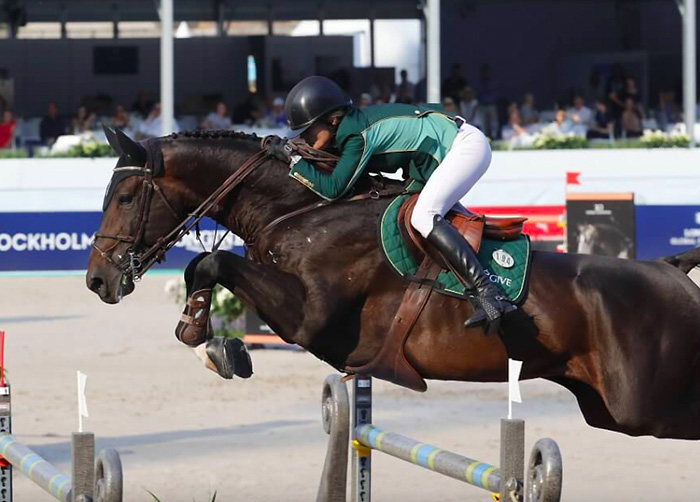
El Barone, sire of Por Favor and currently competing with Malin Baryard
One that caught my fancy, was one of the Egbert Schep team, and one he bred, Por Favor ES by El Baronne (Emerald van t’Ruytershof / Libero / Zeus), the Belgian bred stallion is currently being ridden in Sweden by Malin Baryard. Por Favor is out of a mare by another Swedish front-liner, Tornesch (Lux / Libero H) out of a Lauriston / Landadel) mare.
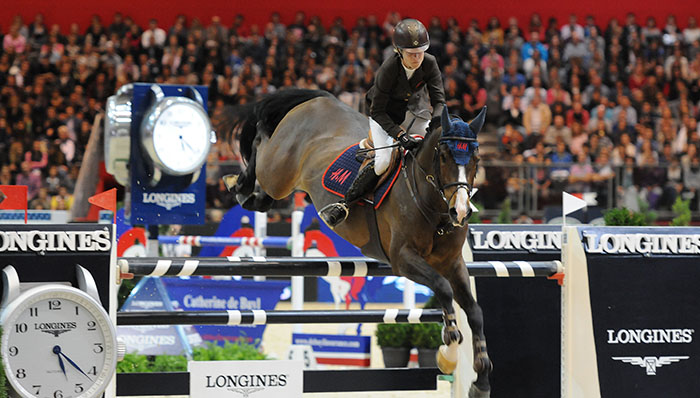
The Swedish frontliner, Tornesch, competing at the highest level with Malin Baryard
Por Favor was crowned one of the four premium stallions out of day one.
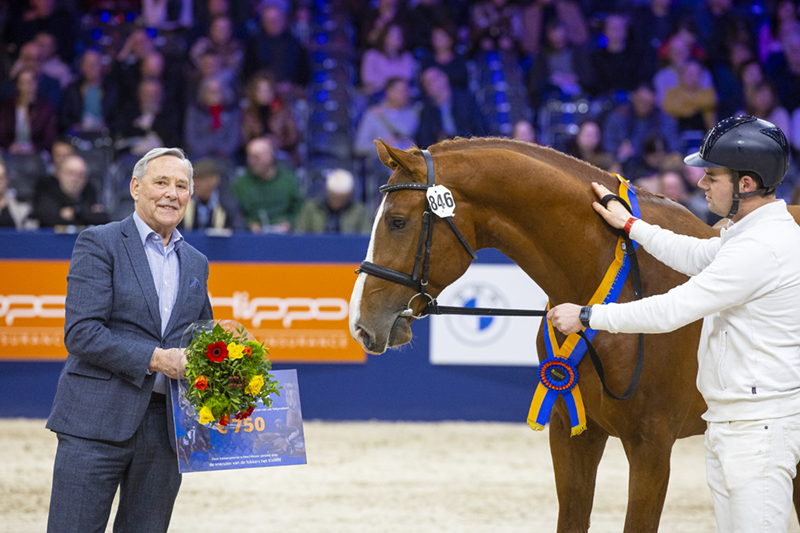
Egbert and Por Favor, don’t eat the premium wreath… (Digishots photo)
The other three were Portlaw Keizersberg (Aganix du Seigneur out of a mare by the Thoroughbred, Kreator xx); Unedo van de Vondel (Conthargos / Cardento) and Powerman (Hardrock Z / Corland). Day 2 saw, three premiums: Popino-Larus (Gaspahr / Voltaire), Power of Zsazsa (Kannan Jr / Sam R – and in case you are wondering, Kannan Jr is nothing to do with the French stallion, Kannan; Prestobantos (Opium jw van de Moerhoeve TN/Carambole).
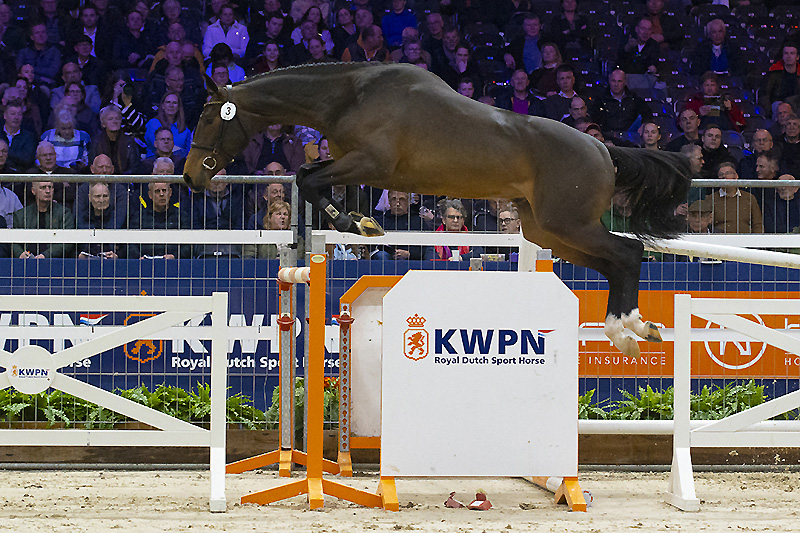
Portlaw Keizersberg, another premium (Digishots photo)
Number 84 presented by last year’s KWPN breeder of the year, Hans de Roover takes home the whackiest cross prize. The colt, Phoenix is by Mr de Roover’s home bred stallion, Gullit HBC who is conventionally bred for jumping, by Cantos, out of a Namelus R / Nimmerdor mare, things get whacky with the mare who is by the dressage stallion, Sir Oldenburg, out of a mare by the Hackney, Cambridge Cole. It showed a nice enough jump, I’m sure the head of the commission, Cor Loeffen remembers Marcus Ehning’s Grand Prix star, Küchengirl, who was out of a Cambridge Cole mare, but ‘no’ he says, ‘with this pedigree, the horse has no chance.’ He is not selected – anyone looking for a classy eventing prospect?
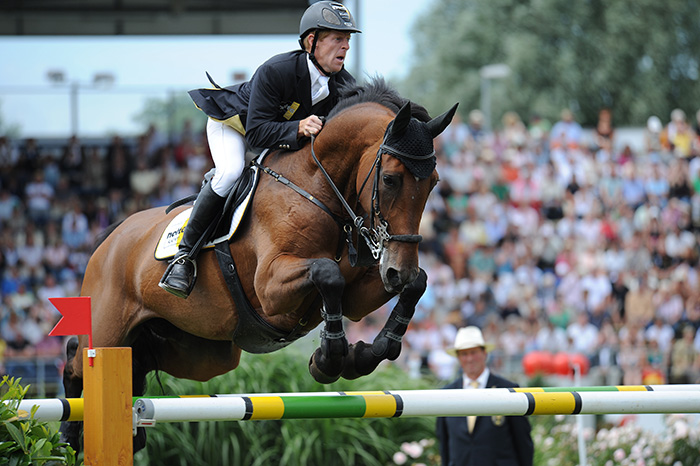
Marcus Ehning and Küchengirl, also out of a Cambridge Cole mare, and winning, here at the highest level, Aachen
In her profile of the breeder, Jenneke Smit, Dutch journalist and breeding expert notes that he ‘already did good business in both harness horse and show jumping horse breeding.’
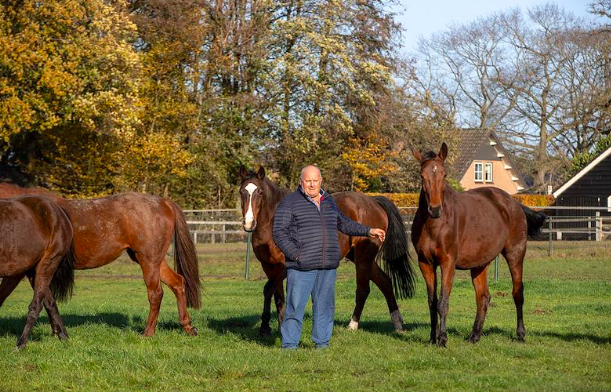
Hans de Roover – Breeder of the Year (Photo – Dirk Caremans)
Jenneke discovered that: “More than forty breeding products, bred from different strains, have already performed at 1.30m level or higher. Although most of the successes have been achieved with the Jolaris line, other strains have also flourished for the breeder in Strijbeek, West Brabant. ”
‘For example, we started a line with the Harmonie daughter Onita, which I had acquired as a foal through trade-in. Her father was a harness horse stallion and I’ve always been crazy about trying to breed a good utility horse out of that. You can also use the urge that harness horses have in show jumping and dressage sports. In addition, I have always wanted only very beautiful harness horses. I covered Onita three times with the Libero H son Niagara, which resulted in the mare Ulen, among other things.’
“This unusually bred mare herself performed at 1.30m level and produced no less than seven offspring in a row for De Roover, all of whom have performed at 1.40m level or higher in international sport.”
Mr de Roover has this advice when it comes to selecting stallions: “In terms of stallion choices, I always follow my gut. I have always liked to give young stallions the chance. I am convinced that you can make the fastest progress with young stallions, I have also seen that with the pigs and cows. I like to choose young stallions with a lot of presence and a dam line rich in performance and predicate. Then you won’t easily miss the mark. In addition, the cost is also a lot more favorable with young stallions.”
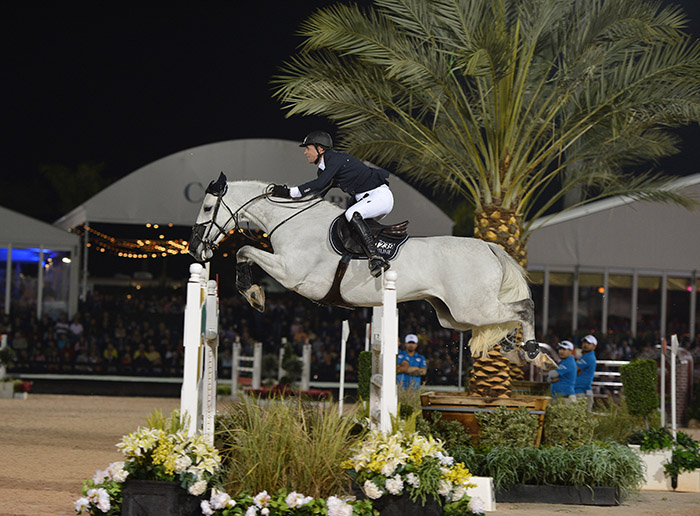
Ben Maher’s Cella, a star and producer of 18 embryo-transfer foals
Despite the fact that star showjumping mares have seldom become star broodmares, the hunt is on for foals out of the superstars, like Ben Maher’s Cella (Cento / Chin Chin). Of the eighteen foals Cella has produced so far with the aid of embryo transfer, two have jumped 1.55m, and one 1.60m – Happy Wandor der van’t Roosakker by Wandor van de Mispelaere (Landor / For Pleasure). At this year’s licensing, VDL presents a son of the great mare, Point of Honor by Conthargos (Converter / Chin Chin). Not surprisingly he gets selected but he was a pretty fancy jumper.
Time for our procession of Hardrocks. Though some can get a bit fast and flat to the jump, jump they can. I liked number 97, Paardrock Ryal K, which is not one of the VDL team, even though his dam is consolidated VDL breeding and features three of their stallion stars: Indoctro, Nimmerdor, Ahorn.
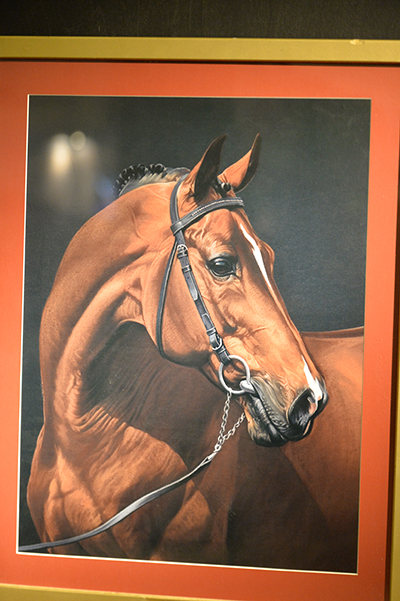
Nimmerdor, one of the VDL stallion stars
As always it was a pleasure to catch up with my French friend, Anaud Evain, for whom the breeding of jumping horses has been a life long obsession. As always his observations are as witty as they are wise. What did he like?
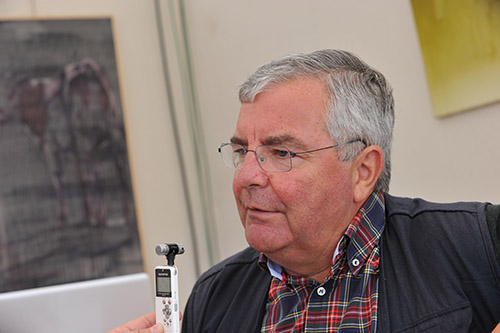
“Some of the horses we have seen, we knew they were good jumpers, but the new collection was from Hardrock, Hardrock seems to stamp his frame. When you see him he is not bringing as much blood as you could expect, so I think you should use mares with enough blood, but he is bringing nice bodies, and the energy in the jump was quite interesting to see.”
But sometimes they got a bit fast and flat…
“Yes. What’s going to be the requirements of the sporthorses in seven years, that’s the question we have.”
More careful?
“More careful and a quick execution of the movements, so it’s not exactly a well organized parabola, more just a quick efficient jump over the poles. I think the key point in the future is the rideability and of course, you can’t see much of that in freejumping. For example, if you compare ten Kannan and ten Canturo in freejumping, the Canturo might end up with better marks in the freejumping but the Kannans will have more rideability and in the end you will see more Kannan than Canturo, in the sport. That’s the limit of the exercise of watching freejumping for jumping talents.”
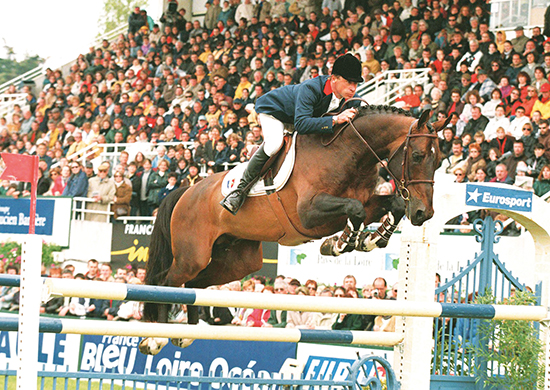
Kanaans will have more rideability
Were there any other stallions whose progeny caught your eye?
“I saw one interesting son of Panenka, this is a Comme il Faut. I would like to see some more by this stallion, because this one was jumping well.
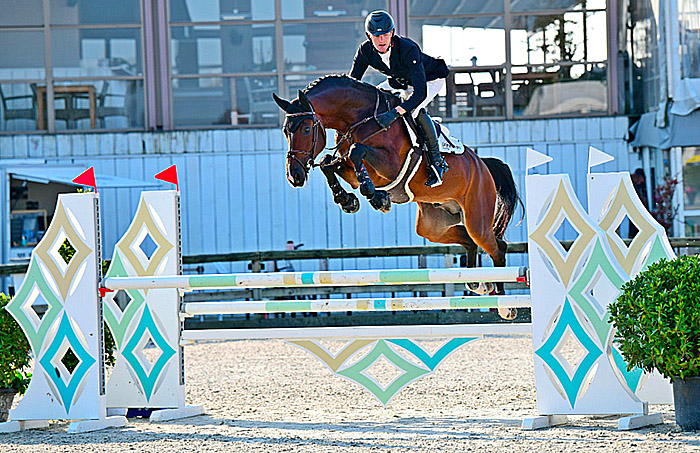
Panenka
This certainly was one of the colts who made the audience sit up, Piqué by the the eight-year-old Belgian stallion, Panenka de Kalvarie (Comme il Faut /Echo van t Spreveld) out of Haya by Vigo d’Arsouilles out of a Heartbreaker mare – that’s the second cross of Heartbreaker, the other through his son, Echo van t Spreveld.
Back to Arnaud:
“There were also some by Grandorado. I have seen it in France, the Grandorado are a little on the heavy side, but here I saw Grandorado from mares with a lot of blood, and it was quite okay. Once again, I need to see them under saddle, but it is nice to have a first impression, positive or negative, then the showjumping course will tell you the truth.”
There were two breeders here with a lot of stallions, but with two very different approaches. Weipke van der Lageweg was largely represented by progeny of Hardrock Z, a twenty-year- old 1.60 stallion from an established bloodline, while Egbert Schep relied more on his homebred seven-year old, La Costa. Which is the way forward?
“I think your description of the two approaches is right, and they are both successful, so it’s no one is better than the other. Weipke is buying a lot of foals and he makes his selection on numbers, but he also pays attention to the new genetic, when you see his catalogue, it’s a lot of new stallions.”
“Egbert is more using his own breeding program, he’s trusting his instinct and using names that he likes, I can’t blame him because he uses one of our GFE stallions, Candy de Nantuel quite a lot.”
“I think both approaches work, it is just a personal feeling. We have the same in France, some breeders only present their own production, others do what we do now at GFE, we buy fifty foals a year from our clients in France and Belgium and the Netherlands, and then make our selection of which go forward for breeding.”
Do you think that perhaps the Dutch have been a little conservative with the bloodlines they have used?
“It’s a general inclination that’s true in Germany, even in Belgium, you are more comfortable with what you know than what you don’t know. Every known stallion has started as an unknown. It’s more up to us to encourage breeders to test the young genetic which in the end will make the difference. You know to put three trays into the oven to decide which one will make you the best soufflé.”
“Encouraging the evolution of the young ones is key for the success of a studbook. It’s difficult because breeding is individual and improving the genetic is a team effort.”
You said the future was in the direction of careful and quick, which bloodlines is this going to favor?
“The horse with blood. My definition of blood is the time between the stimulus and the reaction, and the ability to maintain this short reaction time for a minute and a half or two minutes, the time for a course. The Furioso blood, the Heartbreaker blood, will be helpful for that but I don’t see a particular bloodline which is much better than the other. It’s really a lot in the brain of the horses. How are we going to measure the quick response to the stimulus, and how are we going to measure the rideability, and the inheritability of these characteristics? That’s a question for all studbooks.”
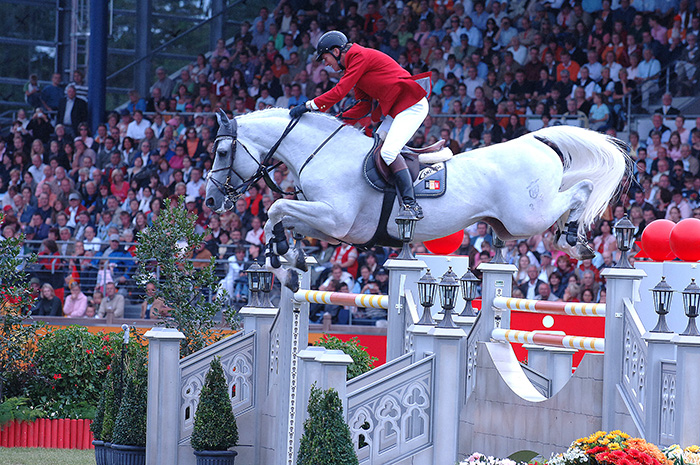
Cumano, scope, and a winner at Aachen
“In the mid-80’s we all knew that the winner in 2000 would be a scopey horse, a Cumano, a Cathargo, and we all know that the winner of 2040 will be a quick horse. He’ll still have to jump 1.60m, 1.65m and add the quality of quick execution because now you see every weekend in Europe the result of these three-star Grand Prix, and there’s always, 6, 7, 8, 9 clears in the jump-off, so if you don’t want to end up eighth in the Grand Prix with a double clears, you better be quick!”
The La Costa’s are pretty special. Number137, Paradox ES really sails over the oxer, and shows once again, Mr Schep’s willingness to go left field in his choice of mare, the colt is out of Winde by the Thoroughbred, Roven, and out of a Voltaire / Joost mare.
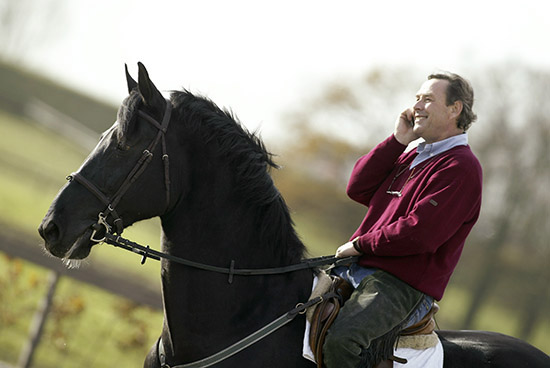
Egbert Schep, on a horse, and on the phone at home…
It was good to chat to Egbert….
Rather than go to an older established stallion, you have gone with younger ones…
“I think the good young stallions have to have a chance to produce, otherwise you never know if it is a breeder, yes or not. That’s why I take good young stallions that I know, that I’ve seen myself.”
But you bred La Costa yourself…
“I bred him myself, I even bred the mother myself. I think La Costa can be a very good breeder. I have four stallions now in the second selection here at den Bosch from him, and he bred only twelve mares, that’s a good percentage.”
What is he putting on his foals?
“He makes a very nice elastic types with a lot of jump.”
And you are prepared to use Thoroughbred, one of your mares is by the Thoroughbred Roven (Lefty / Pretensioso)…
“That Thoroughbred I bought myself in America and that was a Thoroughbred that jumped Grand Prix, and there are not so many Thoroughbreds who jump Grand Prix. I like a lot of blood in the mares.”
“La Costa is a very careful horse, with a lot of jump. He jumps a little bit in his own way but he is abnormally careful and he has a lot of scope. If he stays sound, he can be a Grand Prix horse for sure. He’s coming seven now, he’s jumping 1.30m, 1.35m. Last year he won the overall stallion competition for six years old.”
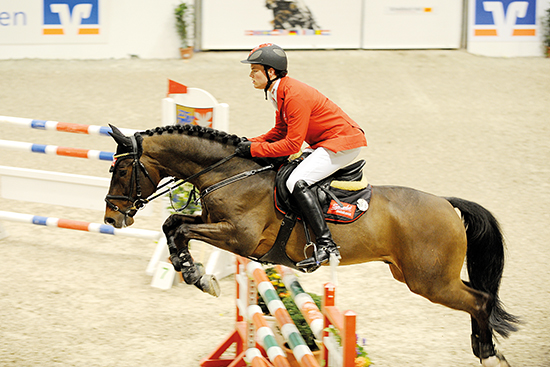
Stakkato Gold
The commission selected two of the La Costas to go on, one out of the Roven mare, and one out of a mare by Stakkato Gold.
What other stallions do you like aside from La Costa?
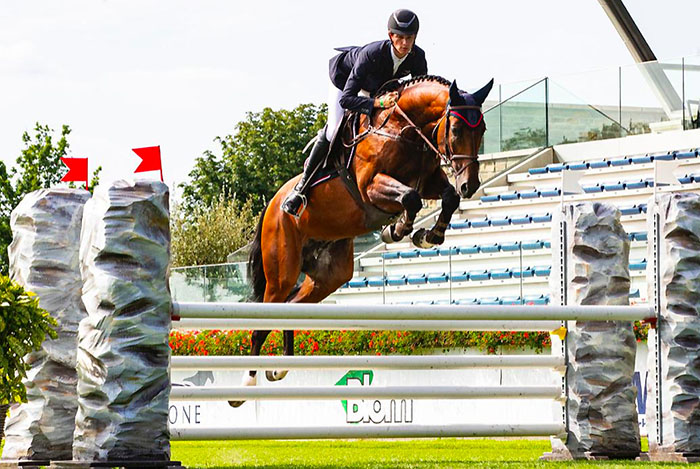
Mindset ES, a five-year-old
“I have another stallion that’s five years old, that is Mindset ES (Aganix du Seigneur /Kannan) that I bred also. He was third in the World Championships in Zangersheide, that’s a fantastic horse. The whole family are very good jumpers so I expect a lot of him.”
Talking to Arnaud Evain this morning, he said the jumpers of the future would have to be quick…
“Quick and athletes, they have to be supple and they have to have blood, they have to be fast and they have to be careful, with the courses how they are nowadays speed and carefulness that’s very important.”
“What I like is that every year I have different stallions approved and also premium stallions, we have good brood mares and that’s where it starts, it starts with a good mare.”
It’s the diversity and quality of the mares that the chairman of the jumping horses committee, Cor Loeffen draws attention to. As always Cor is a delight to interview even if he always starts out saying that his English is poor, which it isn’t…
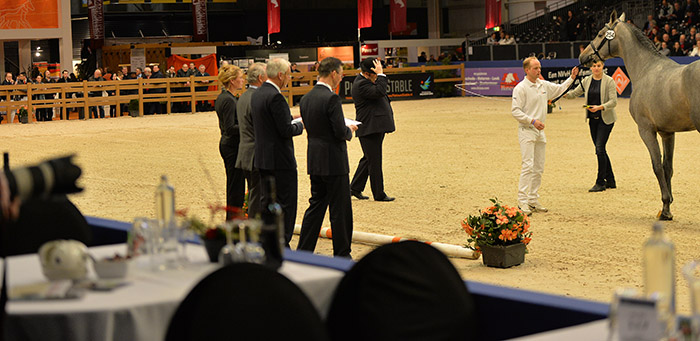
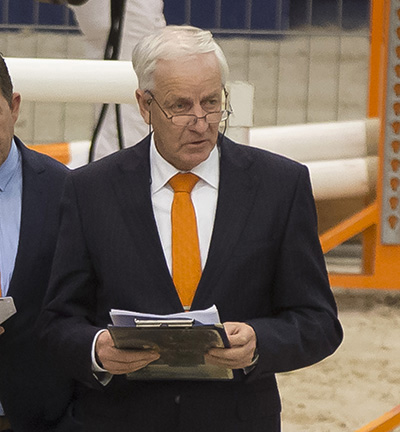
After two days looking at these young stallions, where is Dutch jumping breeding, is it in good health?
“Yes, I think so, we are happy because we can select a lot of stallions from very good mare lines, it is very important when you want to breed, that the stallion is from a good mare line. We have good Dutch mares lines, we have French, Belgian and German, and they produce good young stallions that can now go to the performance test.”
“We look to the conformation, it is important that the stallion is rectangular, that he looks like an athlete, that the back and the loins are good, especially the loins, it’s important that the loins are not weak. Then especially that the croup is not too sloping, a little bit flat for a jumper is not a problem, when it is too steep that is a problem. It is very important that the legs are correct and not too weak in the pasterns. if it is weak in the pasterns, especially behind, then we don’t select the horse. The x-ray is important but not just the bones, also the tendons and the muscles.”
“It is important that the canter is functional, that means that the horse makes a long stride, and short strides. When he jumps and he comes a little too close, it is important that he is quick and upwards and forward, and not only up. If they go up, and no forward, then you have a big problem when you have an oxer.”
It was nice this year you did not have to send any horses away because they had been over-trained at home…
“When the horse is too much trained, and he only goes higher, and higher and higher, we have a problem, we don’t like that because when you go to the shows if the horse only goes up and not forward, then you have faults in the time. It’s over-training at home.”
But you seem to have got over that problem, it doesn’t happen now…
“Maybe a little bit, but not extreme, that’s the reason we are happy about that.”
It was interesting to see the son of Heartbreaker, Hardrock Z with so many sons, and you liked some of them – is that important to keep that Heartbreaker line…
“Heartbreaker was a very good stallion, he was a very good jumper, but it is necessary when you have a Heartbreaker that he is rectangular. And most of the Hardrock progeny they are rectangular, and that makes Hardrock a good stallion. When we have Heartbreaker in the mother line, that is very good.”
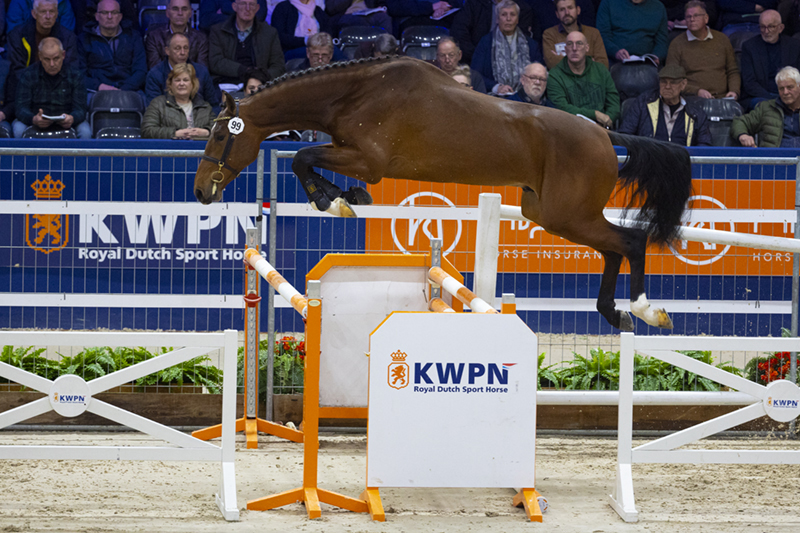
A premium for the Hardrock son, Powerman (Digishots Photo)
The other stallion with a lot of horses is a young stallion, La Costa…
“La Costa when he goes to the shows, he is very competitive, quick reflexes and careful. The owner of La Costa has given him mares, it is difficult for a young stallion to get the good mares, and Schep the owner of La Costa gave him his good mares. Now we can see his products and when they jump, they are not spectacular but functional.”
And it was nice to see one of them was out of a mare by a Thoroughbred…
“That we like very much, we have him in the premiums, and we have also one by Aganix du Seigneur out of a mare by the Thoroughbred, Kreator. We like it when the mother is a half-blood, it is very difficult to get a good Thoroughbred for breeding showjumpers, so when we find a good half-blood we like it very much.”
And once again we remember just how much we like this concentrated jumping seminar that is the KWPN licensing…
